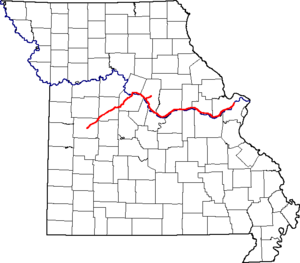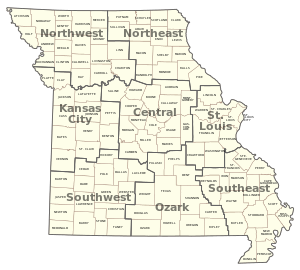The Conservation Commission met Dec. 12 and 13 in St. Charles. Commissioners present were:
Don C. Bedell, Sikeston, Chair
James T. Blair, IV, St. Louis, Vice Chair/Secretary
Tim E. Dollar, Blue Springs, Member
Marilynn J. Bradford, Jefferson City, Member
REGULATIONS
The Commission approved the following seasons:
Turkey
Youth – April 12-13, 2014
Spring – April 21-May 11, 2014
Fall – Oct. 1-31, 2014
Season structure, bag limits, and shooting hours remain unchanged from 2013.
Firearms Deer
Urban Portion – Oct. 10-13, 2014
Early Youth Portion – Nov. 1-2, 2014
November Portion – Nov. 15-25, 2014
Antlerless Portion – Nov. 26-Dec. 7, 2014
Alternative Methods Portion – Dec. 20-30, 2014
Late Youth Portion – Jan. 3-4, 2015
The Commission voted to move ahead with changes it approved earlier this year for fishing regulations at Lake of the Ozarks and Truman Lake. The changes will go into effect March 1, 2014. Those changes include instituting a slot length limit that protects blue catfish between 26 and 34 inches and increasing the daily limit from five catfish to 10 catfish, with not more than two fish 34 inches or longer.
The Commission also voted to allow the importation and sale of one crayfish species, Orconectes virilis (also known as the northern or virile crayfish), for use as live fish bait, effective March 1, 2014.
ADMINISTRATION
The Commission:
- Received presentations from:
Ø St. Louis Wildlife Regional Supervisor John Vogel regarding habitat, wildlife and public-use management at August A. Busch Memorial and Weldon Spring conservation areas (CAs).
Ø Policy Coordinator Alan Leary regarding the Ozark National Scenic Riverways General Management Plan.
Ø Wildlife Management Biologist Kevin Brunke and Resource Scientist Andy Raedeke regarding Missouri Wetlands: Linking Science and Management.
- Approved the purchase of 3.7 acres in Adair County as an addition to the Northeast Regional Office.
- Approved the Conservation Department’s 2012-13 Annual Report.
- Appointed Larry Yamnitz to a 5-year term and Mark Nelson to a 3-year term on the Conservation Employees Benefit Plan Trust Fund Board of Trustees.
- Approved entering into a contract with Zoellner Construction Co., Inc., Perryville, for the construction of the Duck Creek CA Greenbrier Tract and Pool 1 Fishing Access Project in Bollinger and Stoddard counties, at a total estimated cost of 522,289.80. Partial funding for the project is provided by a North American Wetland Conservation Act grant.
- Approved accepting the donation of approximately 223 acres in Hickory County from the estate of Lawrence Matthew Schumacher as an addition to Mule Shoe CA.
- Approved the advertisement and sale of an estimated 1,282,888 board feet of timber on 717 acres of Compartment 6 of Pea Ridge CA in Washington County.
- Suspended privileges of 237 persons under the provisions of the Interstate Wildlife Violator Compact.
- Suspended hunting, fishing, and/or trapping privileges of eight Missouri residents and three nonresidents for Wildlife Code violations. Those whose privileges were suspended are:
Billy F. Hicks, Avalon, all sport privileges, until Sept. 16, 2018
Lester L. Hines, Avalon, all sport privileges, 1 year
Jason J. Hormann, Gardner, Kan., all sport privileges, 1 year
Daniel R. Hughes, Center, Fishing, 1 year
Troy S. Hunter, Emma, hunting, 8 years
Justin Neihart, Jefferson City, all sport privileges, 1 year
Leonid Pakhnyuk, Lyons, Ill., fishing, 7 years
Jeremy P. Redmon, Kirksville, hunting, 7 years
William A. Rodgers, Clinton, all sport privileges, 1 year
Jeffery M. Rush, Sheridan, hunting, 3 years
Christopher J. Spidle, Quincy, Ill, all sport privileges, 1 year
- Approved the suspension or revocation of all hunting and fishing privileges of 405 people who are not in compliance with applicable child-support laws. Privileges suspended for noncompliance are reinstated once the Division of Child Support Enforcement notifies MDC that suspendees have come into compliance with the required laws.
· Approved the nomination of Ed Stegner and Elizabeth “Libby” Schwartz for induction into the Conservation Hall of Fame.


























